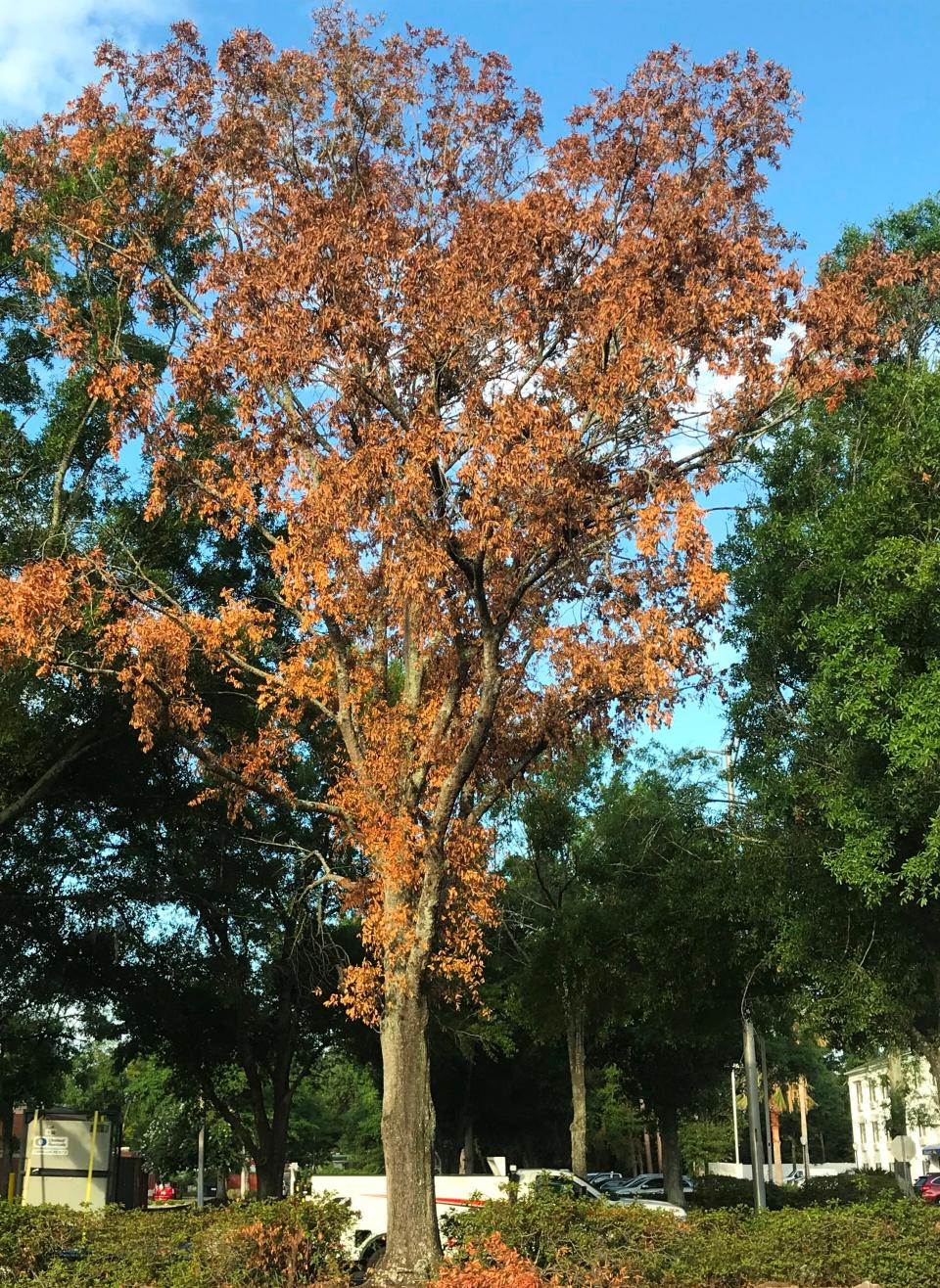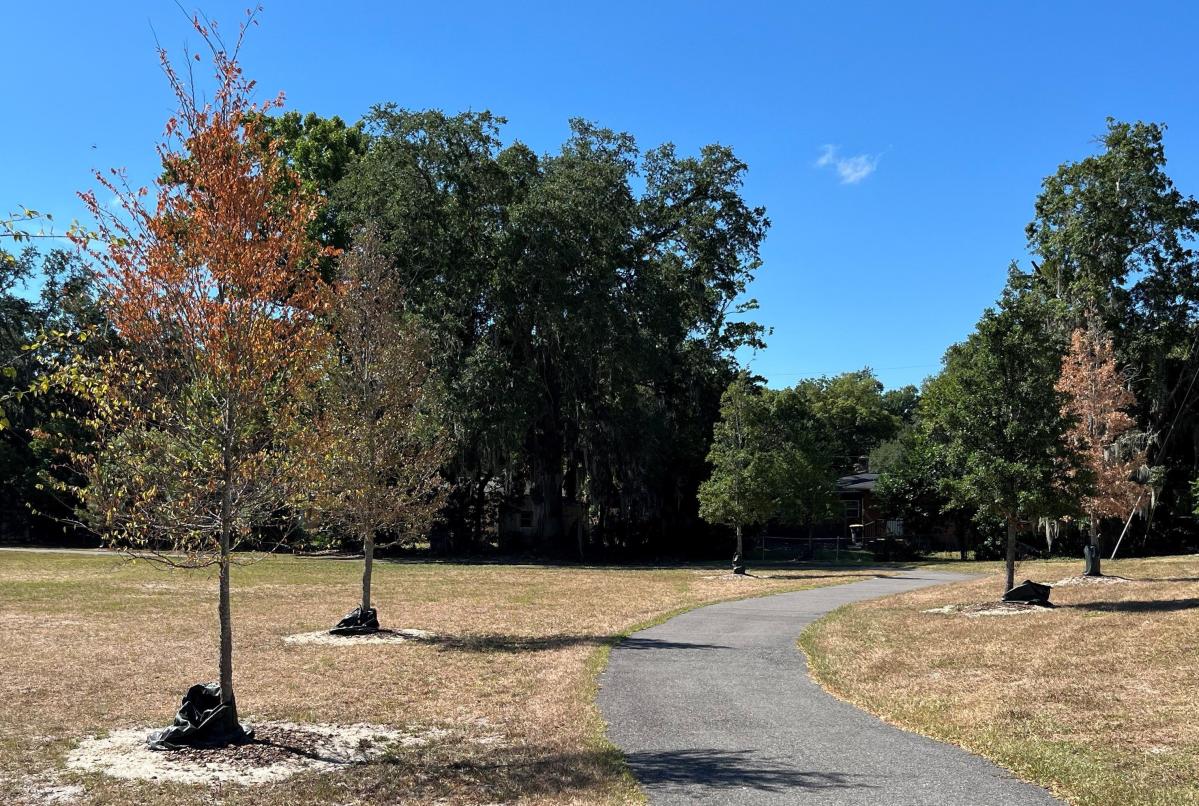The past few months have been difficult for some trees. You can’t help but drive through a random neighborhood and notice that some trees have died seemingly overnight. Quite a few newly planted trees have also died. Although we have had some timely rainfall recently, some trees may not bounce back as easily.
Normal rainfall for April, May and the first three weeks of June is 10.5 inches. During the same period this year, we only recorded about 5.9 inches of rain. That’s only about 56 percent of what we would normally receive. The warmer and drier than normal weather has caused many trees to become stressed. We do not envisage having to provide additional irrigation to mature trees, but in certain cases this may be justified.
There are three main reasons why trees are under stress this time of year: drought, heat and root disease. If you notice that your family tree doesn’t look the way it should, it could be due to one or more of these problems.
More tree tips: Will your trees survive the winds of a hurricane? What you need to know about pruning and more
Garden help: Low maintenance fruit trees that do well in Northeast Florida
Drought: In Northeast Florida we typically have a dry spell from March through May, but this year it was drier than normal. This is also the period when new leaves also appear, creating a greater demand for soil moisture. Trees need water to perform many of their basic functions. For example, trees use carbon dioxide and water in combination with sunlight in photosynthesis. In other words, they use water to make their own food. When there is a shortage of water, the tree produces less food for itself. In other words, trees can produce less food for themselves during hot and dry weather.

Heat: If you’ve lived in Northeast Florida for very long, you know our summers are hot. In a typical summer we have at least 10 days where the temperature is above 95 degrees. In plants, including our trees, high temperatures can increase water loss through the leaves. The process by which water evaporates through the leaves is called transpiration.
Perspiration makes us feel much cooler in the shade of a large tree. It is estimated that a large shade tree will evaporate 120 liters of water per day in summer. Trees are affected when temperatures remain high for extended periods of time and cannot replace the water lost during transpiration. This water shortage increases when the soil is dry. If more water is lost through transpiration than the tree can absorb through its roots, it will suffer from drought stress. The roots cannot obtain water from very dry soil. Periods of sustained stress cause rapid decline and death of trees.
Newly planted trees are particularly vulnerable to hot and dry weather. They are used to getting plenty of water in the nursery, but when planted in the landscape they rarely get enough water. In order to properly irrigate a newly planted tree, it needs a special water source. This usually involves individual water jets or water bags that need to be refilled frequently. Rarely do grass sprinkler systems provide adequate irrigation for newly planted trees.
Root disease: Root disease is the factor that often occurs when larger older trees die suddenly. Root diseases are caused by fungi. Common root fungi are Armillaria and Ganoderma. Armillaria and Ganoderma are naturally occurring fungi that cause wood rot. They are found in the soil and enter trees through root wounds. Often the root is injured during some activity of man. This may include damage to the lawn mower, roots cut during construction, or roots cut during utility installation. These root fungi can colonize the root system and in some cases persist in the tree for years or decades without being recognized. Little by little, year after year, the root fungi will compromise the trees’ ability to absorb water. At some point, the tree’s root system is compromised, preventing it from providing sufficient moisture to the tree’s crown and causing the tree to die. This death may appear ‘sudden’ during periods of high heat and drought. However, in most cases, trees colonized by root rot fungi often take months or years to die. Their foliage gradually becomes thinner and thinner with an increasing amount of branch dieback until it is clear that the tree needs to be removed.
What must we do? While there is no cure for root diseases, we may be able to provide our trees with some relief from the stress of hot, dry weather. Add an inch of water via irrigation to wet the top 12 inches of soil every week during extended drought. If possible, apply water to all soil under the canopy. This may take several hours or longer depending on the type of application device available to you. If you have limited time to spend on your trees, it is better to completely wet a small area than to wet the surface only a few inches of a large area. Restrict pedestrian, mower and vehicle traffic under the tree. Be sure to adhere to local water restrictions, which may limit the days and times you can irrigate. Once the summer rainy season begins, you can start reducing the amount of trees you irrigate.
For more information about drought and trees, visit: https://www.extension.purdue.edu/extmedia/fnr/fnr-483-w.pdf.
Larry Figart is an urban forestry extension officer at the University of Florida/IFAS.
This article originally appeared in the Florida Times-Union: How do you know if a tree is stressed? Here are some answers.







